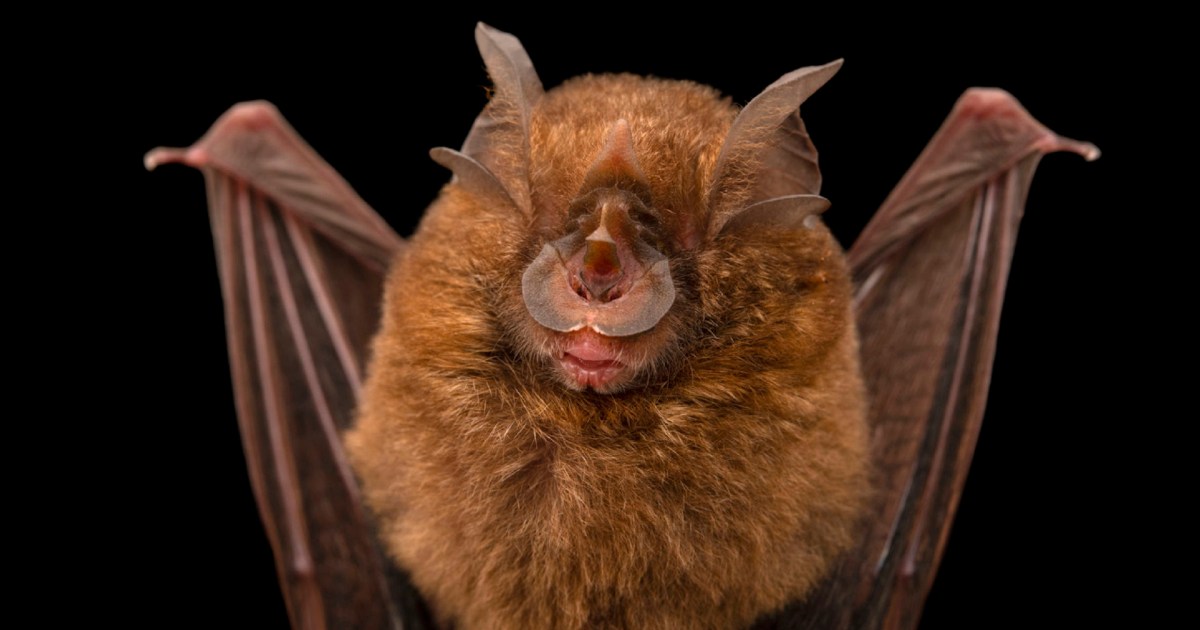In late 2010, researchers from the Institute of Biological Systems, Evolution and Biodiversity at the National Museum of Natural History in Paris explored several sites in northern Cambodia at the invitation of UNESCO and local authorities;
In order to better shed light on the biodiversity of bats scattered in the Preah Vihear temple area.
Biological expert and professor at the Sorbonne Alexandre Hassanein says - in a report published in the French newspaper "nouvelobs" - that this task enabled researchers to collect accurate data on a large number of bat species, including 8 types of horseshoe bat. (Rhinolophus).
This type of bat is receiving great attention today in the scientific community, because it is a natural host for the Sarbecoviruses family, which is a group of coronaviruses that includes all of the severe acute respiratory syndrome (SARS) virus responsible for the spread of the SARS epidemic between the two years 2002 and 2004, and the SARS Cove 2 virus responsible for the Covid-19 disease.
At the time, the researchers contacted the Pasteur Institute in Cambodia to allow them to conduct studies on captured bats, and after storing them for 10 years at temperatures of minus 80 degrees, these samples were recently tested by researchers at the Pasteur Institute in Cambodia, looking for viruses. "Sarbicovirus" type.
The team actually succeeded in finding two positive samples using the Polymerase Chain Reaction test, and the samples were later sent to the Institut Pasteur in Paris.
According to the author, the research on "Horseshoe" bats of the type "Rhinolophus shameli", which were caught in 2010 in a cave in Stung Tring County (northern Cambodia);
It detected two viruses that are very similar to the "SARS-Cove 2" virus.
The viruses were named "RSHST182" (RshSTT182) and "RSHSTT200" (RshSTT200).
The results of the research were published on the biological sciences website "biorxiv.org".
This study will help reveal more information about the emerging corona virus and respond to the Covid-19 pandemic.
An important discovery
The discovery of these viruses in northern Cambodia is important to researchers, because it is the first time that viruses close to SARS-Cove 2 have been proven outside of China.
In fact, this type of virus was previously discovered in two types of bats that were caught in the caves of Yunnan Province (southern China), specifically the "RaTG13" virus (RaTG13) that is similar to SARS Cove 2 by 96%, and isolated from horseshoe bats Rhinolophus affinis, RmYN02 virus, similar to SARS-CoV-2, 94%, and isolates from the horseshoe bat, Rhinolophus malayanus.
This means that viruses similar to SARS-Cove 2 have been spreading for several decades across Southeast Asia through several species of horseshoe bats, a hypothesis that the new research proves.
According to the author, the rates of Coronavirus infection show that the residents of countries near Yunnan Province, namely Cambodia, Laos, Thailand and Vietnam, are less affected by the Covid-19 epidemic than other countries in the region, such as Bangladesh, Myanmar, Malaysia, the Philippines and Indonesia, which may indicate that the inhabitants of these Countries have a stronger "herd immunity" against SARP viruses, according to the author.
What is the relationship of pangolins to bats and corona viruses?
In recent decades, the population of pangolins widespread in Southeast Asia has decreased significantly due to deforestation and poaching.
The pangolin is the only wild animal - except for bats - that has been found with viruses similar to SARS Cove 2, and this happened when Chinese customs authorities seized many sick animals in Guangxi Province between 2017 and 2018, and in Guangdong Province in 2019.
Sick pangolins had a very high viral load and were highly contagious.
But the question that arose at the time: Did these animals contract the virus as a result of contact with bats in their natural environment before they were hunted?
According to the author, the discovery of a new virus similar to SARS Cove 2 in bats in Cambodia's caves confirms this hypothesis, as pangolins were also found in those caves.
This reinforces the view that it was the illegal trade in pangolins that led to the emergence of viruses similar to SARS-Cove 2 in China.
Small carnivore farms dangerous
Small carnivores are considered incubators for Corona viruses, and between 2002 and 2004, many of these animals infected with SARS-Cove were found in cages in Chinese markets and restaurants, including the masked civet and the raccoon dog. dog).
The author explains that the accidental infection of one of these animals in their natural environment could not lead to an epidemic among humans.
Conversely, a single sick animal on a farm with a large number of these animals can cause the situation to spiral out of control.
In 2020, the American mink, which is bred in large numbers to trade its fur, was infected with SARS Cove 2 in many countries, including Denmark, Spain, the United States, France, Greece, Italy and Sweden.
Such cases prove - according to the author - that raising large numbers of small carnivores poses a great health risk, because the virus is likely to spread very quickly in those farms, and to secrete new strains that are more dangerous to humans than the original strain.

